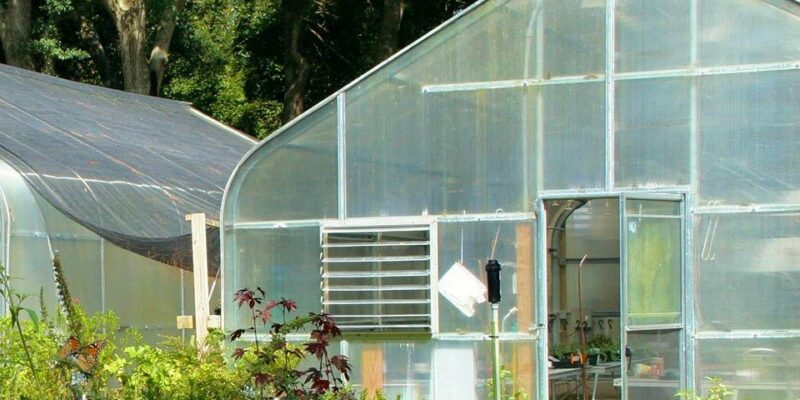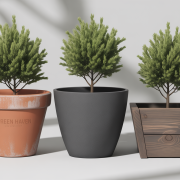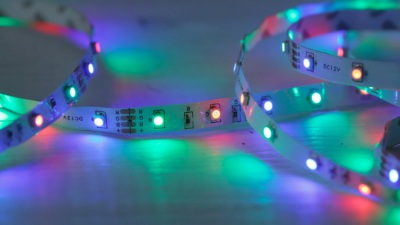Greenhouses provide a haven for keen gardeners by offering a controlled environment where plants can grow. The covers of these structures can wear out or become damaged over time, reducing their efficiency. Greenhouse replacement covers are a fantastic way to revitalize your growing space. In this detailed tutorial, we will look at the necessity of greenhouse covers, the signs that a replacement is needed, the many cover materials available, essential factors to consider when selecting replacements, and how to install a new cover. Let’s get started on revitalizing your greenhouse!
The Importance of Greenhouse Covers
Greenhouse covers are critical in establishing a favorable environment for plants. They control temperature, humidity, and light, shielding your plants from harsh weather, pests, and illnesses. A well-maintained cover guarantees optimal growing conditions, boosting your greenhouse’s potential. However, covers can deteriorate over time, lowering their efficacy and jeopardizing plant health.
Signs It’s Time for a Replacement
Greenhouse covers are subjected to various environmental factors and might deteriorate over time. It’s critical to notice the indicators that your greenhouse cover needs to be replaced. Recognizing these indicators early on can protect your plants and provide optimal growing circumstances. Here are some common indicators that it’s time for a replacement:
Tears and Holes
Small tears and holes in greenhouse covers can occur due to wear and tear, pests, or accidental damage. These gaps can jeopardize the cover’s integrity and allow undesired bugs, insects, or trash to enter the greenhouse. Furthermore, they might cause temperature fluctuations and impede appropriate insulation.
Excessive Wear and Tear
Greenhouse covers can grow worn out and show signs of degeneration over time. Brittleness, material thinning, or a rough texture are examples of this. If you see substantial wear and tear, it’s a sign that your cover no longer provides appropriate protection and insulation for your plants.
Discoloration
Continuous sunshine exposure can cause greenhouse covers to fade or discolor. Significant browning, especially in places with the most sunlight, indicates that the cover’s UV resistance has deteriorated. This can result in diminished light transmission and probable plant harm.
Loss of Transparency
Transparency is lost because greenhouse covers are designed to enable sunlight to pass through while keeping heat. A buildup of dirt, algae, or other substances may have caused your cover to become foggy or opaque. Reduced transparency might limit the quantity of light reaching your plants, slowing their growth.
Reduced Insulation Properties
Insulation is an essential function of greenhouse coverings, as it helps to keep temperatures consistent and protects plants from adverse weather conditions. If you observe a considerable loss in the effectiveness of your cover to retain heat or offer insulation, it’s time to replace it.
Water Accumulation and Leaks
A broken or worn-out greenhouse cover may develop leaks or spots where water collects. This can result in excessive moisture, which fosters the growth of mold, fungi, and plant diseases. If you see water pooling or leaks, it’s time to replace it.
Poor Fit or Shifting
Greenhouse covers may lose their elasticity or become loose over time, resulting in a poor fit on the frame. A sagging cover can let drafts, cold air, or bugs into the greenhouse, negatively impacting overall growing conditions. If you detect the cover slipping or not fitting snugly, it is time to replace it.
Regular inspection and repair of your greenhouse cover can aid in the early detection of these indicators. You can ensure a healthy and fruitful growing environment for your plants by addressing them immediately. Remember that a well-maintained greenhouse cover is critical for optimizing your greenhouse’s potential and achieving optimal plant growth.
Types of Greenhouse Replacement Covers
When selecting a replacement cover for your greenhouse, there are various materials, each with its qualities and benefits. Environmental considerations, light transmission requirements, durability, and budget determine the correct cover material. Here are some examples of popular greenhouse replacement covers:
Polyethylene (PE)
Polyethylene is a popular and cost-effective greenhouse cover material. It is lightweight, simple to install, and provides enough light transmission. PE covers are available in various thicknesses, with higher-quality alternatives offering greater UV resistance to prevent early degradation. They are appropriate for most greenhouse applications and provide a cost-effective option for small to medium-sized structures.
Polycarbonate
Polycarbonate is a long-lasting, impact-resistant material with good insulation and light diffusion. It comes in single, double, and multi-wall panels. Polycarbonate covers retain more heat than polyethylene covers and lessen the possibility of hot spots, resulting in equal plant development. They are more resistant to UV light and last longer than PE covers. While polycarbonate covers are more expensive, they give long-term value and are appropriate for larger greenhouses or places prone to extreme weather.
Acrylic
Acrylic is a high-quality greenhouse cover material recognized for its clarity and light transmission. It enables high light to reach the plants while providing adequate insulation. Acrylic coverings provide great UV radiation protection, preventing damaging rays from entering the greenhouse. Acrylic covers, on the other hand, are typically more expensive than other options.
Polyvinyl Chloride (PVC)
PVC coverings are inexpensive, long-lasting, and simple to care for. They are suitable for various greenhouse applications due to their superior insulation and light transmission. PVC covers are chemically resistant, including fertilizers and insecticides. They come in a variety of thicknesses and can resist moderate weather conditions. PVC covers are an affordable and practical option for small to medium-sized greenhouses.
Other Options
In addition to the materials indicated above, there are several less typical possibilities for greenhouse covers. Fiberglass, for example, has good light transmission and durability but is more expensive and requires additional reinforcing for larger buildings. Woven polyethylene is another alternative with excellent tear resistance for places prone to high winds or hailstorms.
When choosing a new cover material, consider the specific needs of your greenhouse, such as the temperature in your region, the light requirements of your plants, and your budget. Consultation with greenhouse suppliers or specialists can help you select the best cover material for your needs.
Conclusion
Replacement greenhouse covers provide a fantastic opportunity to revitalize your growing space and maximize plant development. You may increase the lifespan and effectiveness of your conservatory by recognizing signs of wear and tear, examining available cover materials, and following the proper installation procedure.
Choosing the right material for your unique needs, whether polyethylene, polycarbonate, acrylic, or PVC, is critical. Take care of your greenhouse cover, and it will take care of your plants, providing the optimal atmosphere for them to thrive for years.













Comments